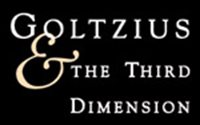
OCTOBER 7, 2001–JANUARY 6, 2002
ABOUT THE artists
Willem Danielsz. van Tetrode (c. 1525-1580)
Willem Danielsz. van Tetrode was born in Delft, but spent several years in Italy from the mid-1540s, working in the Florentine workshop of Benvenuto Cellini and then in Rome under Guglielmo Della Porta. He returned to the Netherlands sometime after 1566, perhaps attracted back by the lure of commissions to replace church statuary that had been destroyed during an outbreak of iconoclasm. Tetrode introduced Dutch collectors to the genre of small bronze statuettes that were fashionable in Italy. The extent of his output is unknown because relatively few of his works have survived.
Hendrick Goltzius (1558-1617)
Despite Goltzius's decision to abandon engraving in favor of painting in 1599, his reputation rests almost exclusively upon his achievements as a graphic artist. In his Harlem workshop, Goltzius developed a remarkable engraving technique, using a systematic network of overlapping curved lines to describe the swellings and recesses of the human body. He also excelled as a maker of chiaroscuro woodcuts. A hallmark of Goltzius's style of the 1580s is the bulging muscularity of his male nudes, an aspect of his work that is examined in this exhibition in light of Tetrode's bronze statuettes. After Goltzius traveled to Italy in 1590, his work became more restrained in tone, his figures less emphatically anatomical than the mannered nudes associated with Tetrode.

Published to accompany this exhibition, Goltzius and the Third Dimension explores the work of esteemed Dutch printmaker Hendrick Goltzius and the theory that his celebrated musclemen were influenced by the lesser known bronze statuettes of Delft sculptor Willem Danielsz. van Tetrode.
Featuring essays by Stephen H. Goddard, senior curator of prints and drawings at the Spencer Museum of Art, the University of Kansas, and James A. Ganz, curator of prints, drawings, and photographs at the Sterling and Francine Clark Art Institute, the book includes more than seventy illustrations that provide detailed comparisons between the two artists' figures, as well as a number of works that do not appear in the exhibition.
